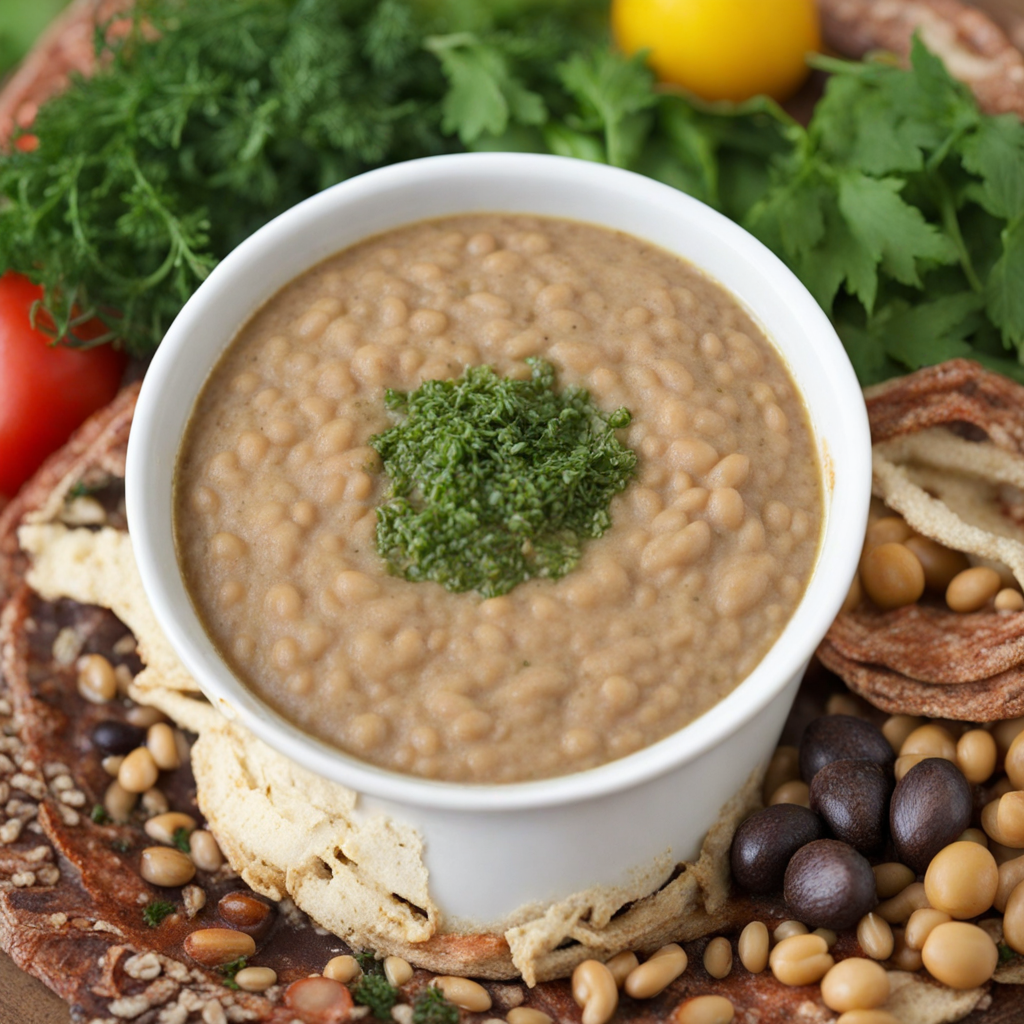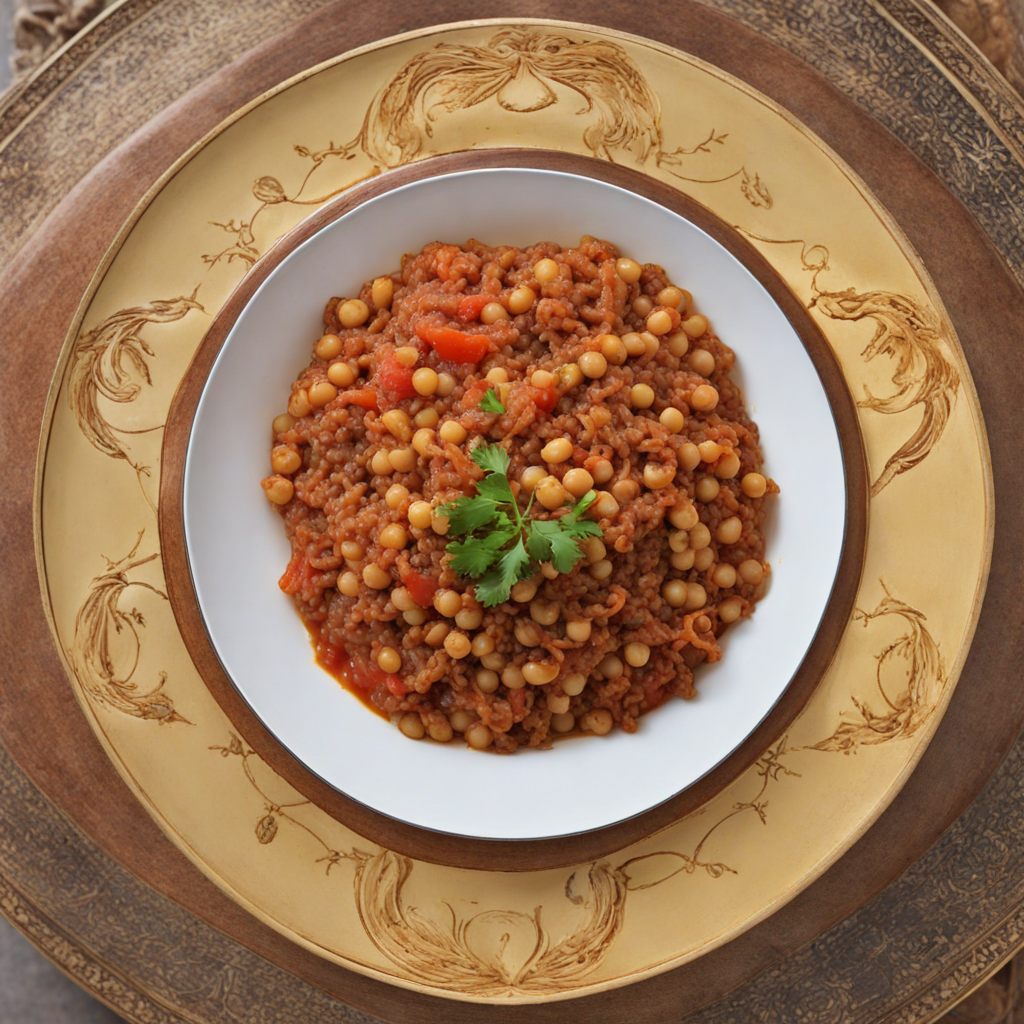Kunafa
Kunafa is a beloved Egyptian dessert that tantalizes the taste buds with its unique combination of textures and flavors. At its core, Kunafa is made from thin, noodle-like strands of pastry called semolina, which are layered with rich fillings, typically composed of cheese or a blend of nuts. The pastry is baked until golden and crispy, creating a delightful contrast to the soft, gooey interior. Once out of the oven, it is generously soaked in a fragrant syrup made from sugar, water, and a hint of rose or orange blossom water, infusing the dish with a sweet floral aroma that elevates the experience. The preparation of Kunafa is an art in itself, often involving skilled hands that expertly handle the delicate strands of dough. The cheese filling, often a stretchy, gooey variety like Nabulsi or Akkawi, oozes out with each bite, providing a savory counterpoint to the sweetness of the syrup. Alternatively, nut-filled variations offer a crunchy texture, with pistachios and walnuts adding a delightful nuttiness that complements the syrup-soaked pastry. This duality of flavors—sweetness from the syrup and richness from the filling—creates a harmonious balance that is both satisfying and indulgent. Traditionally served warm, Kunafa is often garnished with a sprinkle of crushed pistachios or a dusting of powdered sugar, making it not only a treat for the palate but also a feast for the eyes. It is commonly enjoyed during festive occasions, family gatherings, or simply as a delightful end to a meal. Each bite of Kunafa transports you to the bustling streets of Egypt, where the aroma of freshly baked pastries fills the air, inviting you to indulge in this exquisite dessert that is sure to leave a lasting impression on any food lover's heart.
How It Became This Dish
The Enchanting History of كنافة (Kunafa) #### Origins and Early Beginnings Kunafa, a beloved dessert that has become synonymous with Middle Eastern sweets, particularly in Egypt, boasts a rich tapestry of history that intertwines culinary traditions, cultural practices, and regional flavors. Its origins can be traced back to the Levant, with roots likely extending into ancient Ottoman culinary practices, but it is the Egyptian variant that has captured the hearts and palates of many. The precise origin of kunafa is somewhat nebulous, with various theories about its inception. One popular belief is that it was created during the time of the Umayyad Caliphate in the 7th century, possibly in the city of Damascus. It was initially made with a simple dough that's fried and soaked in syrup, serving as a fortifying dish for soldiers. This early version was not the finely shredded dough we recognize today, but rather a thicker pastry that offered sustenance and energy. Kunafa’s name derives from the Arabic word "كُنَفَة," which can mean "to wrap" or "to cover." This is reflective of the traditional preparation methods, where layers of dough are wrapped around a filling of sweet cheese or nuts. The dish eventually spread throughout the Levant and into North Africa, evolving into various forms and flavors. #### Cultural Significance In Egypt, kunafa is more than just a dessert; it holds a profound cultural significance. It is a staple during the holy month of Ramadan, serving as a delightful way to break the fast after a day of abstinence. The sweet dish embodies hospitality and celebration, often prepared and shared among family and friends during iftar— the evening meal that marks the end of the daily fast. Kunafa’s presence is also felt during festive occasions, such as weddings, Eid celebrations, and other joyful gatherings. In Egyptian culture, the act of preparing kunafa is often a communal activity, with families coming together to make the dish from scratch, passing down recipes and techniques through generations. This communal aspect of preparation reinforces social bonds and creates a sense of belonging. The dish is also a testament to the culinary ingenuity of the Egyptian people. While it was embraced and adapted from its Levantine roots, Egyptians have made kunafa their own by incorporating local ingredients and flavors. This adaptability speaks to the broader narrative of food as a reflection of cultural identity and regional influences. #### Evolution Over Time As kunafa spread across the Middle East, it underwent various transformations. In Egypt, the dish evolved significantly, leading to the creation of different regional variations. The most common form is the thin, noodle-like strands known as "kataifi," which are layered with fillings such as sweetened cheese, nuts, or even cream, then baked and drenched in aromatic syrup. The introduction of sugar syrup infused with rose or orange blossom water added a distinctive floral note that has become a hallmark of the Egyptian version of kunafa. This syrup is typically poured over the hot pastry, allowing it to soak in and create a delightful contrast between the crispy exterior and the gooey, sweet interior. Through the centuries, kunafa has continued to evolve, with innovative chefs experimenting with fillings and toppings. The traditional sweet cheese filling remains popular, but modern interpretations have included ingredients like chocolate, pistachios, and even fruit. These adaptations showcase the versatility of kunafa and its ability to cater to contemporary tastes while retaining its traditional roots. In addition to its variations in fillings, kunafa can also be prepared in different styles. One of the most popular methods is the "kunafa bil jibn," which features a layer of cheese that melts beautifully during baking. Another variant, "kunafa na'ameh," employs a finer dough that results in a softer texture. Each style contributes to the rich diversity of this iconic dessert. #### Globalization and Contemporary Relevance In recent decades, the globalization of food culture has further propelled kunafa into international cuisine. As Middle Eastern restaurants and cafés have proliferated around the world, kunafa has found its way onto menus in Europe, North America, and beyond. Its unique texture and delightful flavors have captivated a global audience, allowing it to transcend cultural boundaries. Social media platforms have also played a crucial role in popularizing kunafa, showcasing its visually stunning presentation and inviting more people to try their hand at making it at home. Video tutorials, food blogs, and Instagram posts have highlighted the intricate preparation methods and diverse variations, encouraging a new generation of food enthusiasts to embrace this traditional dish. Moreover, kunafa has sparked culinary competitions and showcases, further cementing its status as a cherished dessert. The annual Ramadan food festivals in Egypt often feature stalls dedicated to kunafa, where vendors display their unique creations, from classic renditions to avant-garde interpretations. #### Conclusion The history of kunafa is a fascinating journey through time, reflecting the cultural richness of the Middle East and the resilience of culinary traditions. From its humble beginnings in ancient kitchens to its modern status as a beloved dessert, kunafa embodies the spirit of community, celebration, and innovation. In Egypt, it serves as a symbol of hospitality, a sweet that brings people together, and a dish that evokes nostalgia for countless generations. As it continues to evolve and adapt, kunafa remains a testament to the enduring power of food to connect people, share stories, and celebrate life’s precious moments. Whether enjoyed during Ramadan or at a wedding, this delectable dessert will undoubtedly continue to hold a cherished place in the hearts of those who savor its unique flavors and textures.
You may like
Discover local flavors from Egypt







